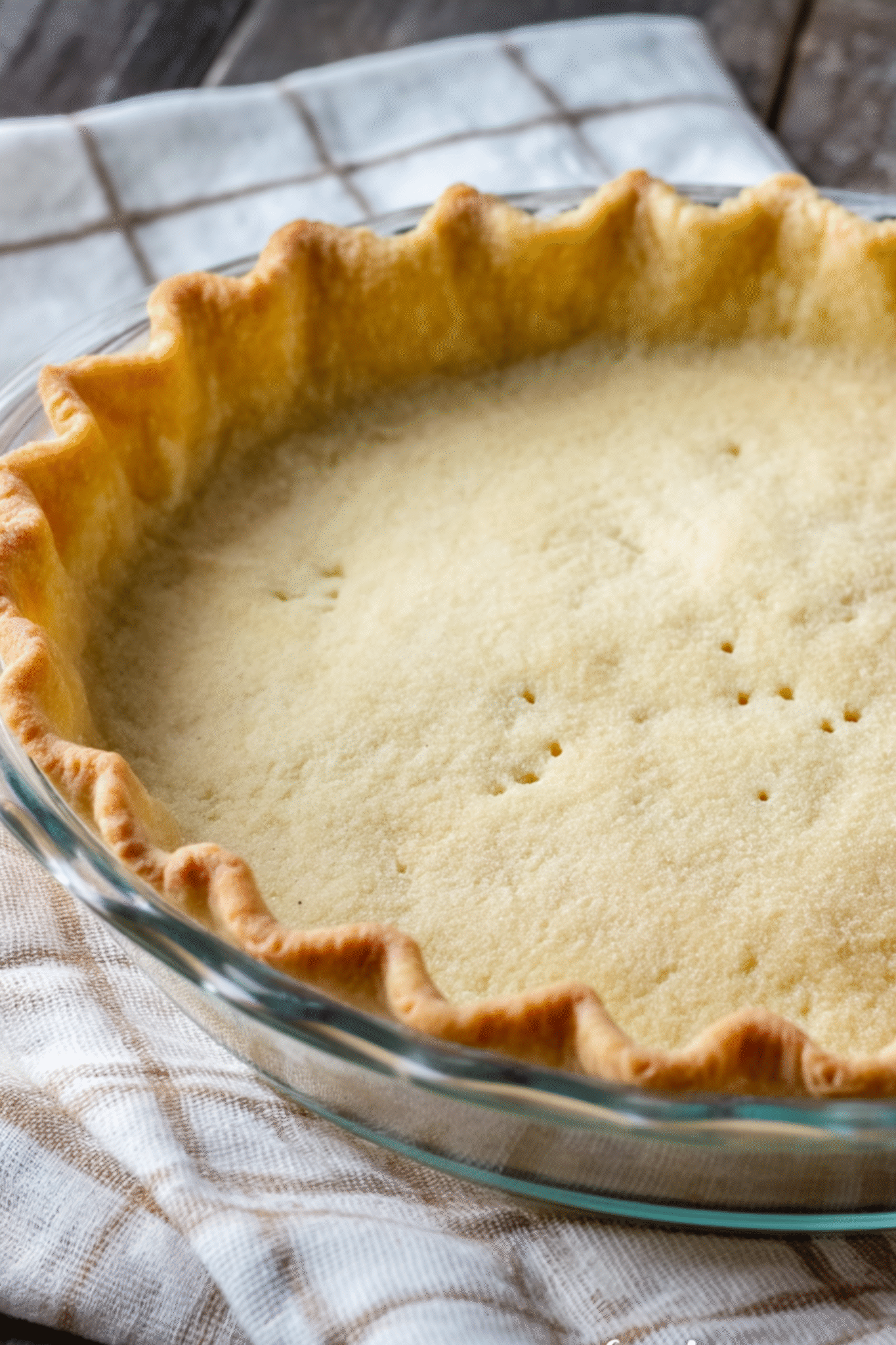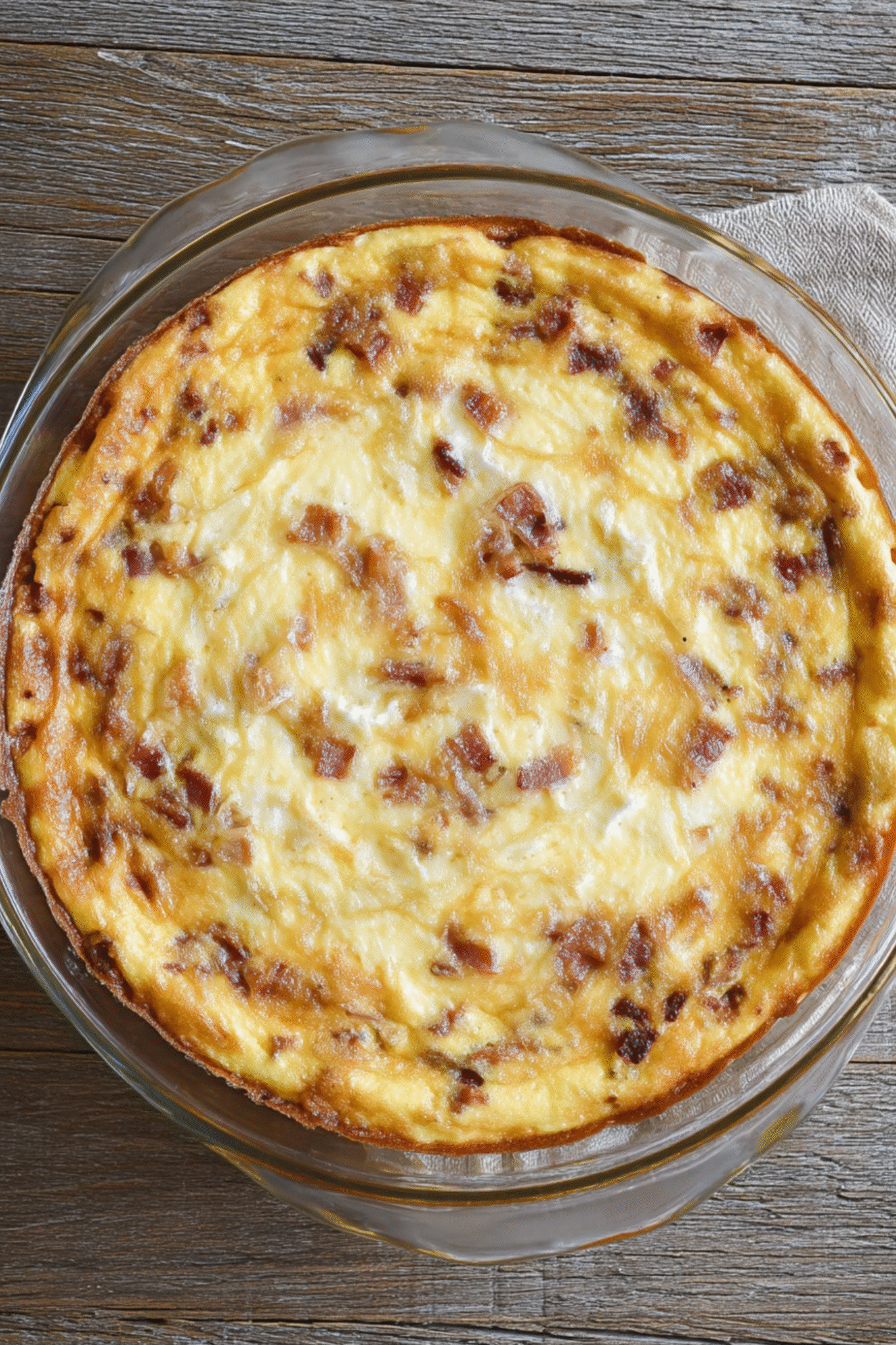Looking for a fresh, tangy, and vibrant dish that works on its own or as a side to just about anything? This Arabic salad is exactly that. Crisp cucumbers, juicy tomatoes, herbs, and a lemony dressing bring a Mediterranean burst to every bite. In this article, you’ll get more than a recipe—we’ll dive into the traditions behind Arabic salads, different styles, and tasty pairings. Whether you’re preparing a simple lunch or a mezze spread, this refreshing salad belongs on your table.
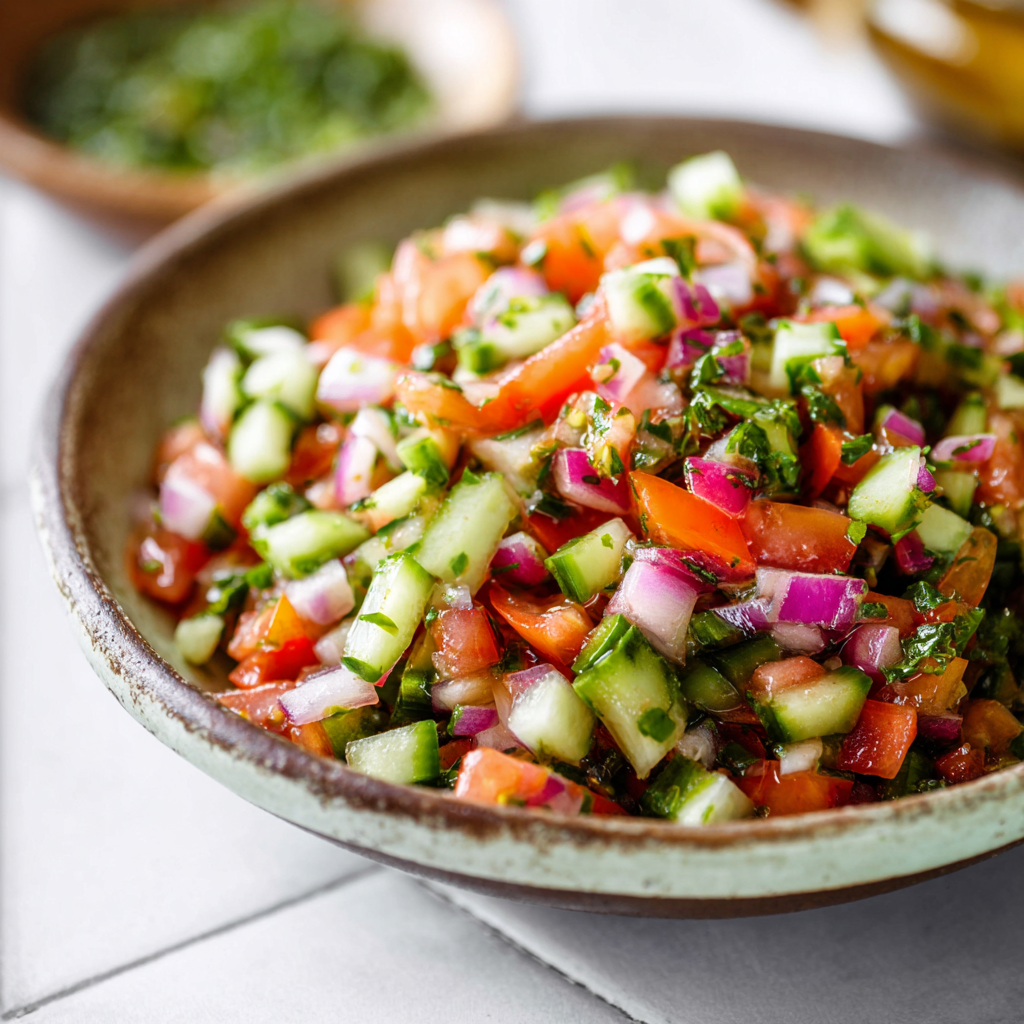
Table of Contents
The Story & Intro
Why Arabic Salad Brings Me Back to My Kitchen Roots
When I was a kid in Naples, my mom would make a version of Arabic salad that was simple yet so alive. It was all about the bright acidity of lemon, the zing of sumac, and the freshness of herbs. She’d dice vegetables like it was second nature—her knife tapping a soft rhythm on the wooden board while the kitchen filled with the citrusy scent of lemon juice and olive oil. Even though she wasn’t Middle Eastern, her food respected its soul. When I moved to New York, this salad stayed with me. I made it during pop-ups, catered events, and eventually served it at my wedding spread. It always disappeared first.
Arabic salad isn’t just a bowl of vegetables. It’s a vibrant, refreshing dish served throughout the Arab world in countless variations. What ties them all together is freshness, balance, and brightness—something I try to recreate every time I chop up cucumbers and parsley in my own NYC kitchen.
The Essence of a Traditional Arabic Salad
So what makes a traditional Arabic salad? It’s not fancy—it’s humble, made from simple ingredients like cucumbers, tomatoes, onions, lemon juice, and olive oil. But every region adds its touch. Palestinians might add sumac or chili flakes. Lebanese versions sometimes sneak in crunchy romaine or green peppers. The dressing is always light, tangy, and oil-based. Unlike creamy Western dressings, this one lets the veggies shine.
If you’ve tried my light shopska salad or the bright flavors of my Thermomix gazpacho, you’ll love this version too.
How Arabic Salad Connects Cultures Through Food
Arabic salad feels like a cross-cultural bridge. Its ingredients show up across cuisines—tomatoes in Italian sauces, cucumbers in Greek tzatziki, herbs in Persian cooking. But when you mix them in that lemony dressing with a sprinkle of sumac? That’s unmistakably Middle Eastern.
It’s a salad that doesn’t just accompany food—it uplifts it. I often serve it alongside grilled meats, like my côte de boeuf rib steak, or tuck it into wraps with roasted vegetables or leftover lamb.
Making Arabic Salad at Home
Building the Base of a Classic Arabic Salad
At the heart of every authentic Arabic salad are fresh, seasonal vegetables. There’s no need for greens or lettuce here. The vegetables do all the work. You’ll want firm Persian cucumbers for crunch, juicy tomatoes (Roma or vine-ripe work beautifully), crisp red onion, and colorful bell pepper. Parsley adds an herbal punch that gives it that signature Middle Eastern freshness.
Everything should be chopped fine—not minced or mashed. The size matters. It’s not just for presentation; when each bite contains a little of everything, the textures and flavors really sing. I like using a sharp knife and taking my time, just like my mom taught me.
For inspiration on clean chopping and seasonal flavor, I often think back to my roasted tomato garlic soup, where balance starts with how you prep each ingredient.
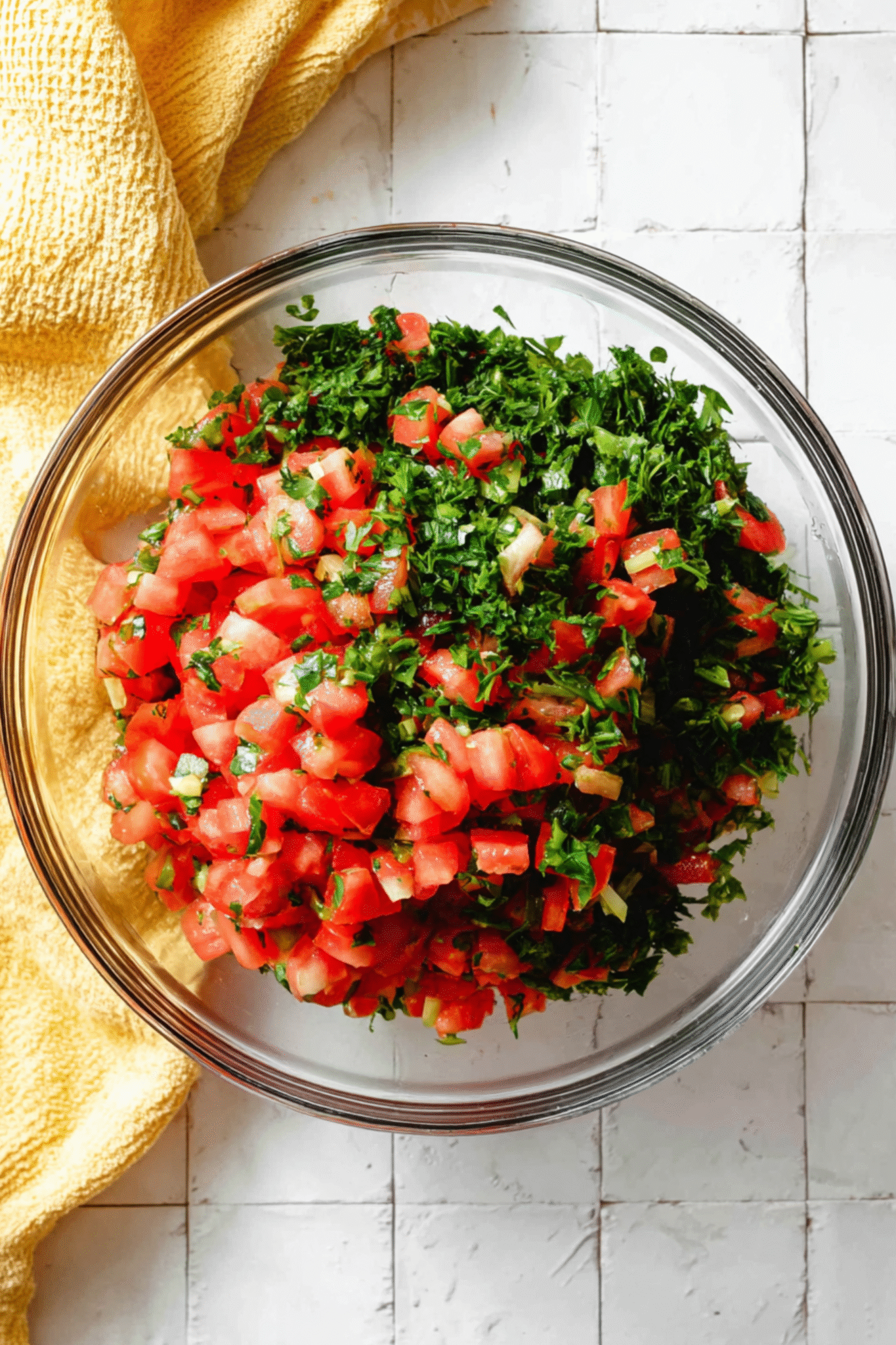
How to Make the Perfect Arabic Salad Dressing
Now let’s talk about the dressing. It’s bold, tart, and layered. The foundation is half lemon juice and half olive oil. This is not your average vinaigrette—it’s brighter, sharper, and unapologetically punchy. Then comes pomegranate molasses. This thick, tangy syrup gives the salad its depth and slight sweetness. It also nods to Levantine cuisine, where it’s a pantry staple.
Add sumac for that tangy, lemony pop, dried mint for cool aroma, and salt to balance it all. Shake it in a mason jar until it emulsifies into a deep brown, glossy dressing. Drizzle about 1/4 cup over the salad, toss gently, and taste. Adjust salt or add more dressing if needed.
The best part? The dressing keeps in the fridge for a few days. Use it over grilled veggies or even as a drizzle on my keto chicken Caesar salad for a fun twist.
Serving Suggestions and Nutrition
What to Eat with Arabic Salad
Arabic salad shines as a side, but it’s versatile enough to build a full meal around. I often serve it with grilled meats like chicken, beef, or lamb—its tangy crunch cuts through the richness beautifully. It’s also a fantastic companion to dishes like easy lamb mince ragu or alongside a bowl of rice and lentils for a nourishing plant-based option.
Want something lighter? Try it tucked into a pita with falafel or spooned over hummus. It also works great as a topping for baked fish or as a fresh bite next to cauliflower in the air fryer—that lemon-cumin combo plays nicely with the salad’s citrusy flavor.
When building a mezze spread, Arabic salad is always a favorite. I pair it with creamy dips, grilled flatbreads, olives, and small bites. It brightens the whole table and invites everyone to dig in.
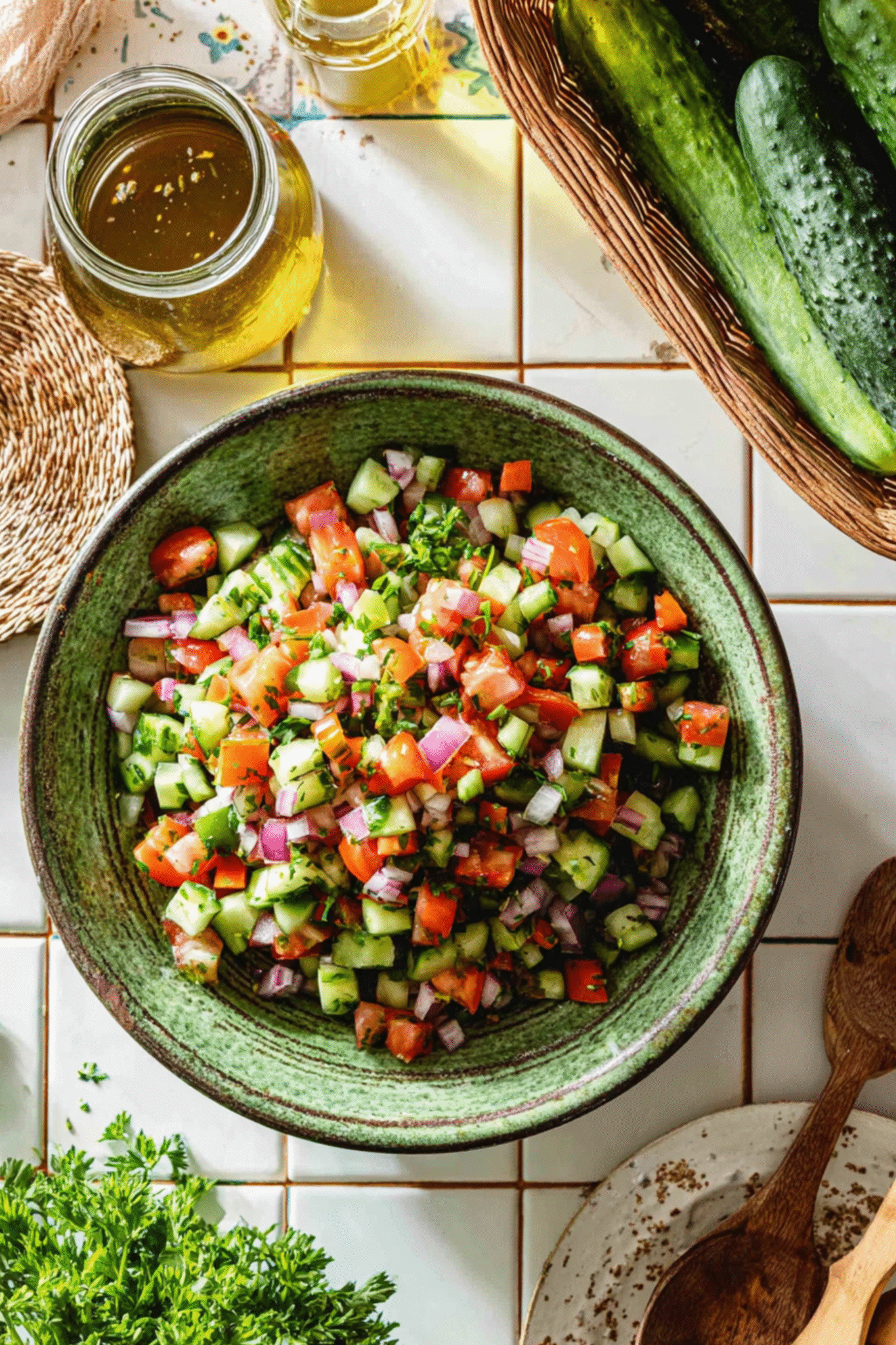
Nutritional Value of Arabic Salad
Aside from flavor, Arabic salad is a powerhouse of nutrients. Every ingredient contributes to a fresh, light, and healthy dish. Cucumbers hydrate and cool, tomatoes provide antioxidants like lycopene, red onions offer sulfur compounds for immunity, and parsley is rich in vitamin K and C.
Here’s a breakdown based on a single generous serving:
Nutritional Breakdown (Per Serving)
| Nutrient | Amount |
|---|---|
| Calories | 293 kcal |
| Carbohydrates | 13 g |
| Fat | 27 g (mostly from olive oil) |
| Protein | 1 g |
| Vitamin C | 83 mg |
Regional Twists on Arabic Salad
Though Arabic salad is rooted in simplicity, each region puts its spin on the core ingredients. In Lebanon, you might find it served alongside fattoush, which adds fried pita chips and a touch of garlic. Palestinian versions may include chili for a kick or more sumac for that lemony depth. In Egypt, they may skip parsley in favor of more onion and green pepper. Some Gulf countries keep it extra simple with just cucumber, tomato, and lemon juice—especially during Ramadan, when it’s a cooling iftar staple.
Want to try another crunchy salad with a bold twist? My shopska salad is a cousin of Arabic salad, but uses white cheese and often includes a mild chili for extra kick.
You can also turn Arabic salad into a full dish by adding chickpeas or crumbled feta. I’ve done this during pop-ups when I wanted to offer a vegetarian option with a bit more body, especially next to mains like my cottage cheese pizza bowl.
FAQs about Arabic Salad
What is a traditional Arabic salad?
A traditional Arabic salad typically includes finely chopped cucumbers, tomatoes, red onion, parsley, lemon juice, olive oil, and seasonings like sumac or mint. It’s light, zesty, and often served as part of a mezze or with grilled meats.
What are the 5 basic salad types?
The five basic types of salads are green salads, bound salads (like potato or tuna salad), vegetable salads (like Arabic salad), fruit salads, and combination salads. Arabic salad falls into the vegetable category, relying on raw chopped vegetables and light dressing.
What is the name of the traditional Arabic salad?
It’s often just called “Arabic Salad” or “Salata Arabiya,” but variations exist: in Lebanon, it’s close to tabbouleh (which uses bulgur), and in Palestine or Jordan, you’ll hear it called salatat khodra.
What to eat with Arabic salad?
Pair it with grilled chicken, lamb, falafel, rice, or lentil-based dishes. It’s also delicious as a topping for hummus, a stuffing for pita wraps, or a bright side to heavier stews and mains.
Conclusion
Arabic salad is more than just a side dish—it’s a celebration of freshness, simplicity, and vibrant flavor. With crisp vegetables and a bold lemony dressing, it pairs perfectly with everything from grilled meats to creamy dips or wraps. What makes it so special is how it transforms everyday ingredients into something unforgettable.
From my Naples childhood kitchen to busy pop-ups in New York, this recipe has stayed close to my heart. It’s quick, nourishing, and endlessly adaptable. Whether you’re hosting a dinner party or need something light for lunch, Arabic salad brings color and joy to any table.
Make a jar of that punchy dressing, keep a few cucumbers on hand, and you’ll always have a refreshing, flavorful dish ready to go. I hope it becomes a staple in your kitchen the way it has in mine.
If you enjoyed this recipe, come join me for more flavor-packed ideas! Follow me on Facebook and Pinterest where I share easy recipes, tips, and inspiration straight from my New York kitchen.
From my home to yours—happy chopping!
Print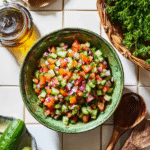
Arabic Salad Recipe
- Total Time: 10 minutes
- Yield: 4 servings
- Diet: Vegan
Description
A refreshing and zesty Arabic salad made with cucumbers, tomatoes, parsley, and a lemony pomegranate molasses dressing. Perfect for mezze or side.
Ingredients
For the Dressing:
– 1/2 cup olive oil
– 1/2 cup lemon juice
– 2 tablespoons pomegranate molasses
– 1 teaspoon sumac
– 1/2 teaspoon dried mint
– 1/2 teaspoon salt
For the vegetables:
– 4 Persian cucumbers, finely chopped
– 1 tomato, finely chopped
– 1/4 red onion, finely diced
– 1 red or yellow pepper, finely chopped
– 1/2 cup parsley, finely chopped
Instructions
1. To make the dressing, combine all ingredients in a mason jar and shake. The dressing will turn a dark brown. Store in the fridge and use as needed. This quantity will make enough for 2–3 salads.
2. For the salad, finely chop the cucumbers, tomato, bell pepper, onion, and parsley.
3. Place the chopped vegetables in a bowl and drizzle over roughly 1/4 cup of the salad dressing.
4. Stir to combine. Taste and adjust for salt and more dressing as needed.
Notes
Best served fresh but keeps well for 1 day in the fridge. Shake dressing before each use. Can be made spicier with chili flakes or milder with extra cucumber.
- Prep Time: 10 minutes
- Cook Time: 0 minutes
- Category: Salad
- Method: No-cook
- Cuisine: Middle Eastern
Nutrition
- Serving Size: 1 bowl
- Calories: 293
- Sugar: 6g
- Sodium: 299mg
- Fat: 27g
- Saturated Fat: 4g
- Unsaturated Fat: 23g
- Trans Fat: 0g
- Carbohydrates: 13g
- Fiber: 1g
- Protein: 1g
- Cholesterol: 0mg
Keywords: Arabic Salad, Middle Eastern salad, lemon salad, pomegranate molasses dressing, sumac salad


